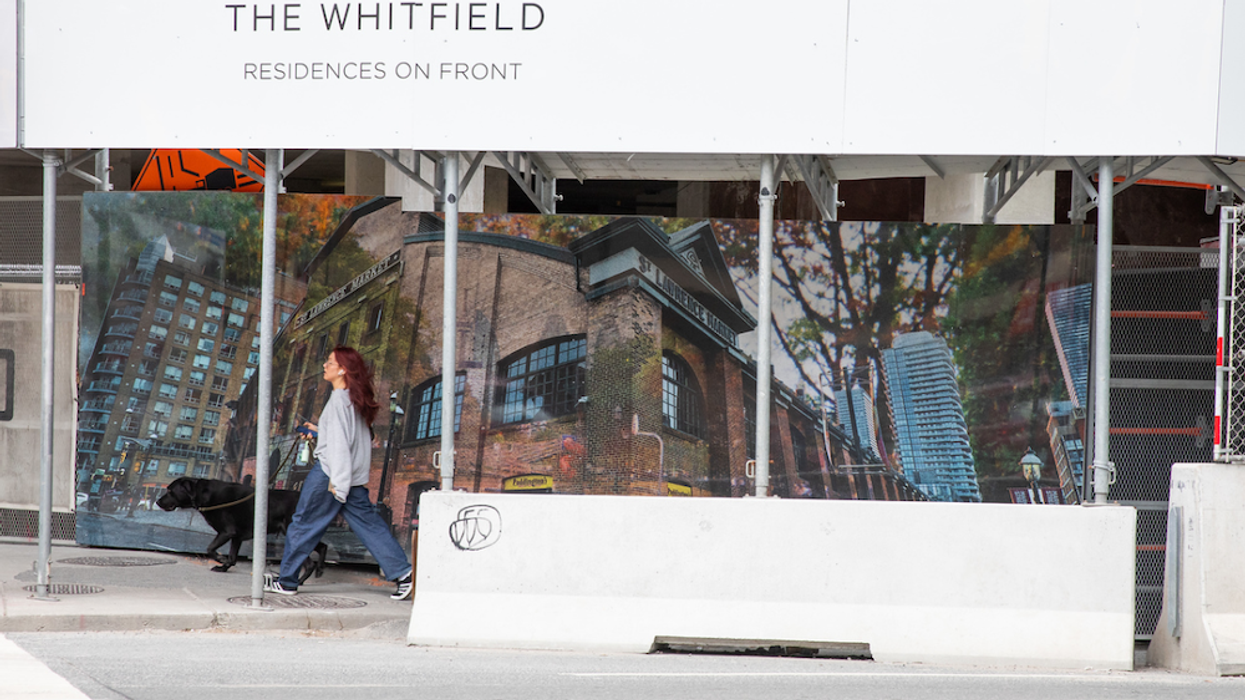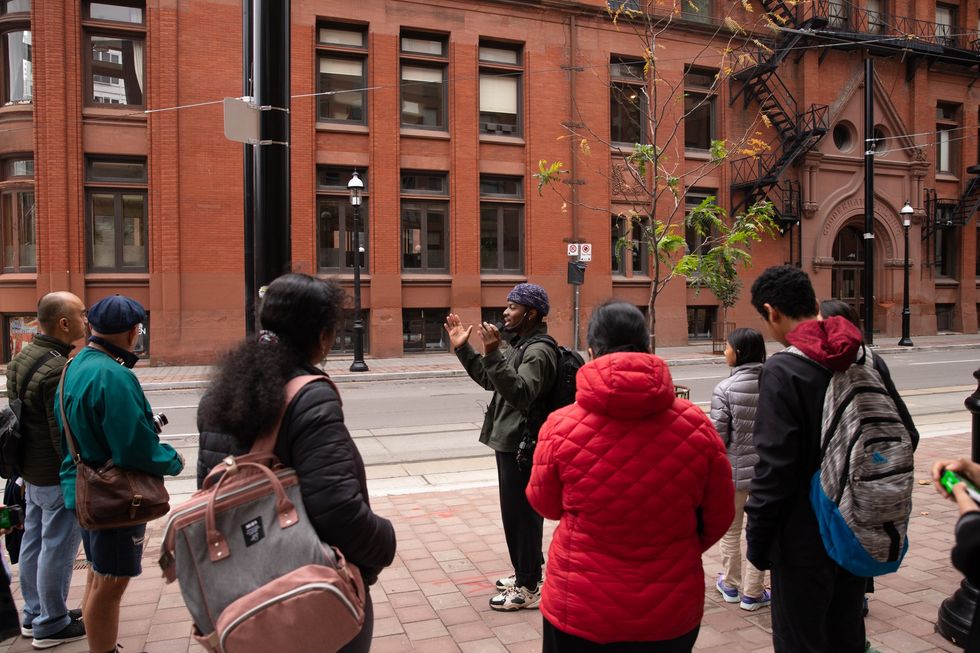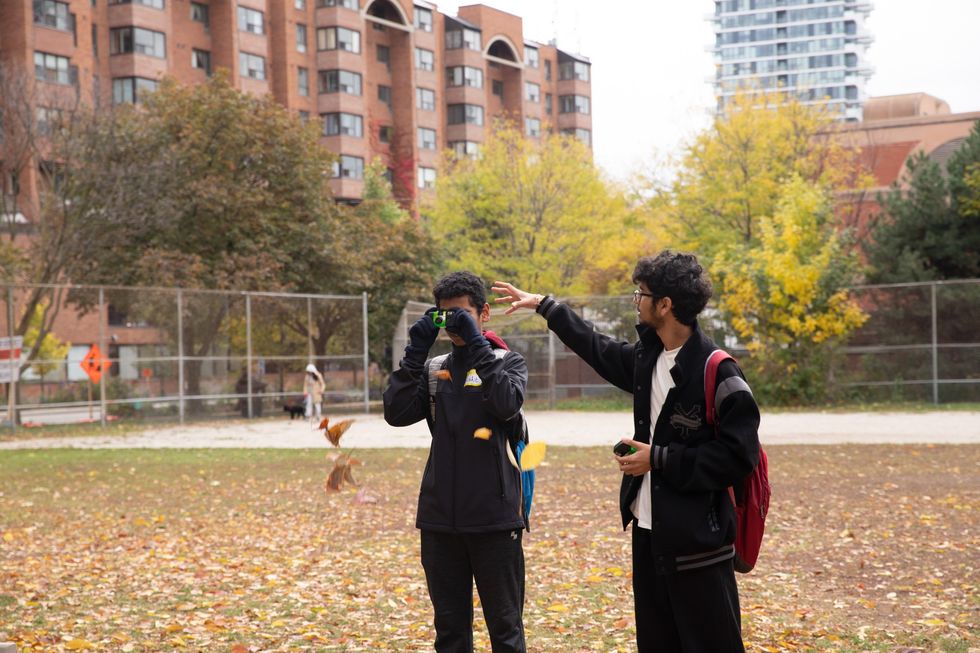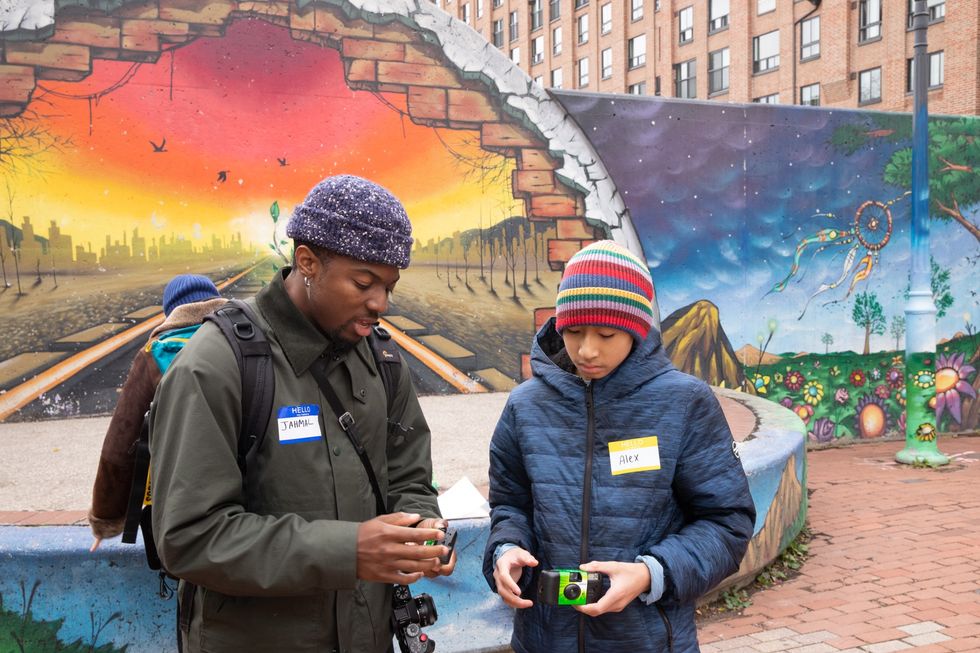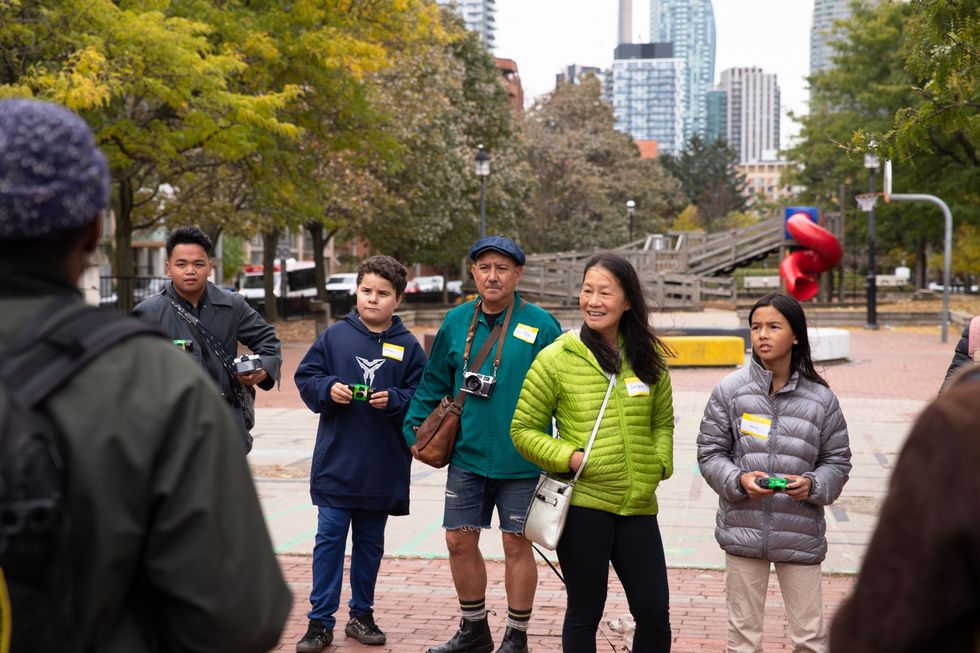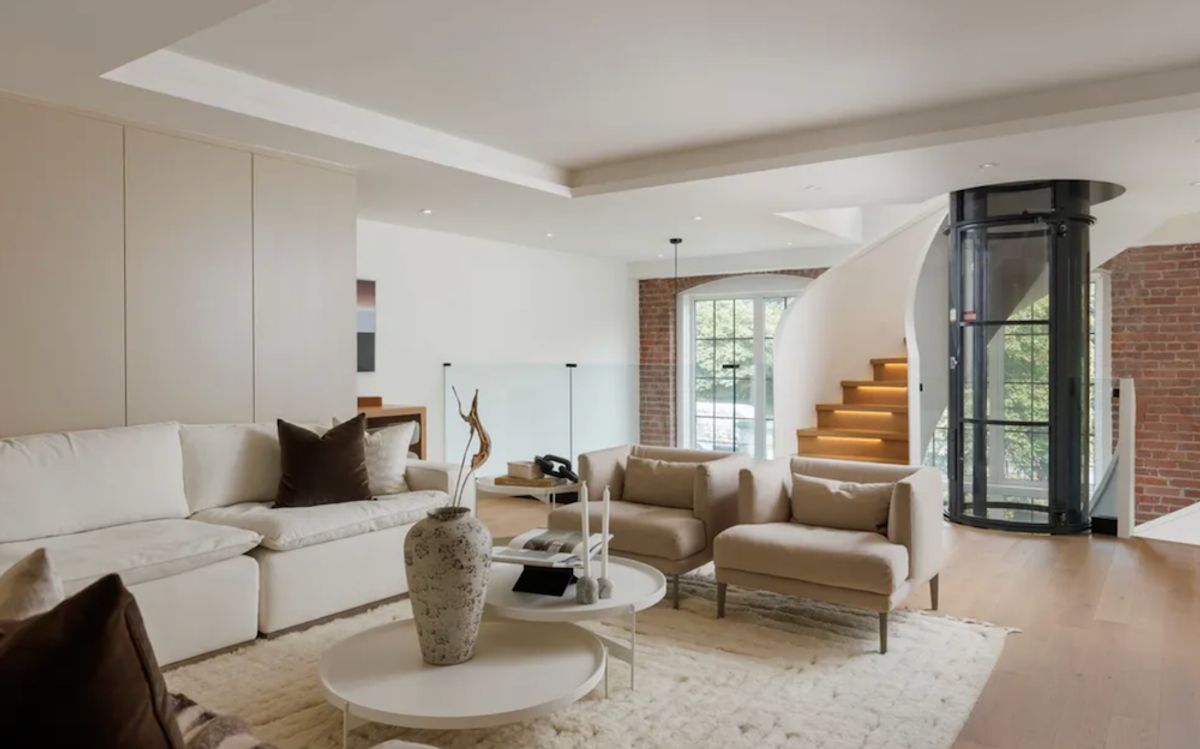It's a well known fact that construction sites are baked into Toronto’s urban landscape.
At last count, the city had 221 cranes in its skies, far outpacing 13 other major markets across Canada and the US. (Los Angeles, the runner-up, had some 50 cranes documented.)
But ongoing construction, while sometimes an eyesore, actually represents something quite beautiful: the growth and nurturing of communities; an influx of new places for Torontonians and newcomers alike to call home.
This is how Menkes Developments — the reputable Toronto-based developer that delivered the most residential units in Canada last year — sees it. And with The Whitfield, Menkes’ latest development at the intersection of Front and Sherbourne streets, the team took its community focus to new heights.
READ: Toronto-Based Developer To Deliver Most Residential Units In Canada This Year
Through a collaboration with STEPS Public Art and local artist Jahmal Nugent, Menkes has transformed The Whitfield’s hoarding into a vibrant and community-driven art installation.
Hoarding As Art?
According to Menkes, the optimization of The Whitfield’s hoarding was born from a desire to involve the local community directly in the neighbourhood’s transformation — a welcome change from new-build construction being a mere buzz of background (or foreground) activity.
"We wanted to encourage direct community involvement, in addition to exhibiting local art," says Jared Menkes, Executive Vice President, High-Rise Residential at Menkes. "STEPS, alongside Jahmal, facilitated this partnership. It takes a village.”
The project, far from being a superficial beautification effort, integrated local youth and community members, with the goal of ensuring the hoarding’s artwork would reflect the spirit of The Whitfield’s neighborhood. The youth engagement aspect was particularly significant. To make the most of the experience, STEPS organized photo walks led by Nugent, where local youth were taught photography skills and techniques.
"Empowering youth to get involved in projects like this fosters a sense of belonging and investment into their communities, while also providing valuable skills development opportunities," says Anjuli Solanki, Program Director at STEPS.
And the results are tangible (or in this case, visible). The photographs taken by the photo walks' participants weren’t just exercises, but now serve as integral parts of the final hoarding display, blending seamlessly with Nugent’s professional work.
The Vision
Jahmal Nugent, whose art is displayed along The Whitfield’s hoarding, saw this opportunity as a chance to merge his passion for large-scale photography with meaningful community engagement.
"Initially, my artistic vision was to showcase the surrounding area where the development [is rising]," Nugent said. "But as [STEPS Public Art, Menkes, and I] talked [further] about embracing and bringing the community into the project, I thought it would be really cool to integrate the community's artwork into the project itself."
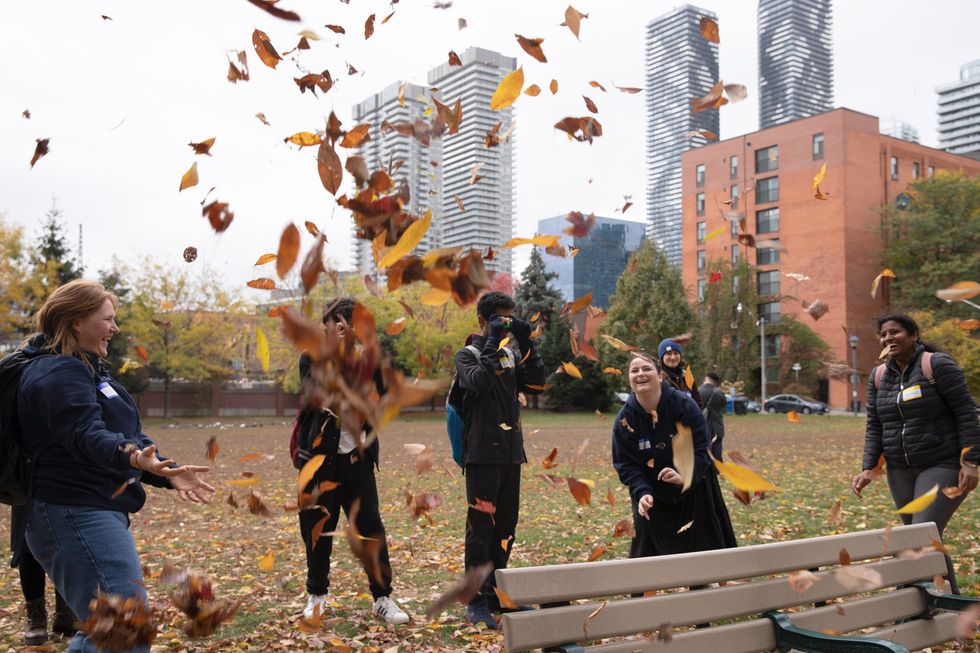
During the photo walks, Nugent drew on his past experience as an artist facilitator and teacher of photography workshops. He guided participants with an open and flexible lean, encouraging creativity and personal expression. "I just wanted it to be as fluid and as natural as possible," he said, “so I didn't really want to give too much direction.”
Providing a baseline structure, Nugent led participants through “basic composition techniques,” inviting them to explore those tools if and when they chose. From that foundation, he encouraged them to “play with their own creativity and do what they wanted to do.”
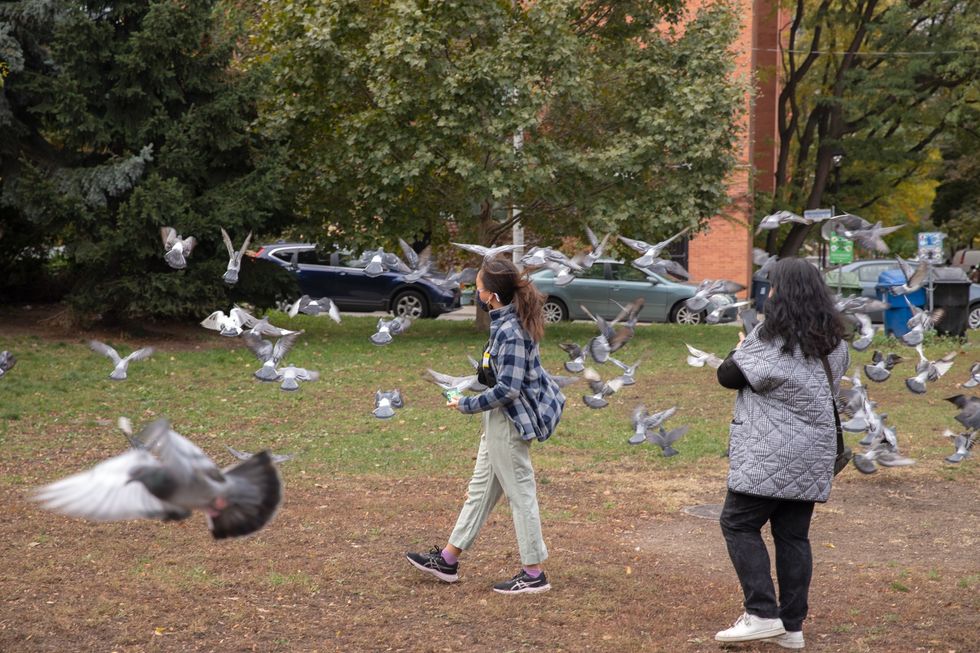
Titled “Homebound Hues,” the final artwork is a mosaic that showcases neighbourhood landmarks, reflects the area’s history, and captures a slice of what daily life looks like around The Whitfield. Passersby will recognize the St. Lawrence Market, the Flatiron Building, the 504 King streetcar, and the CN Tower, amongst other Toronto heroes.
“The landmarks selected are emblematic of what Menkes calls “Front Street Living,” an all-encompassing urban living experience.” Menkes says. “Not only are these landmarks significant to the immediate community they serve, but they are also rich icons of Toronto.”
"The vision was always to create artwork inspired by youth within the Front and Sherbourne community," says Solanki. "Jahmal did a wonderful job in blending digital and analog photography that tells the stories of community, connections to urban spaces, and playful symbols and landmarks familiar to local residents."
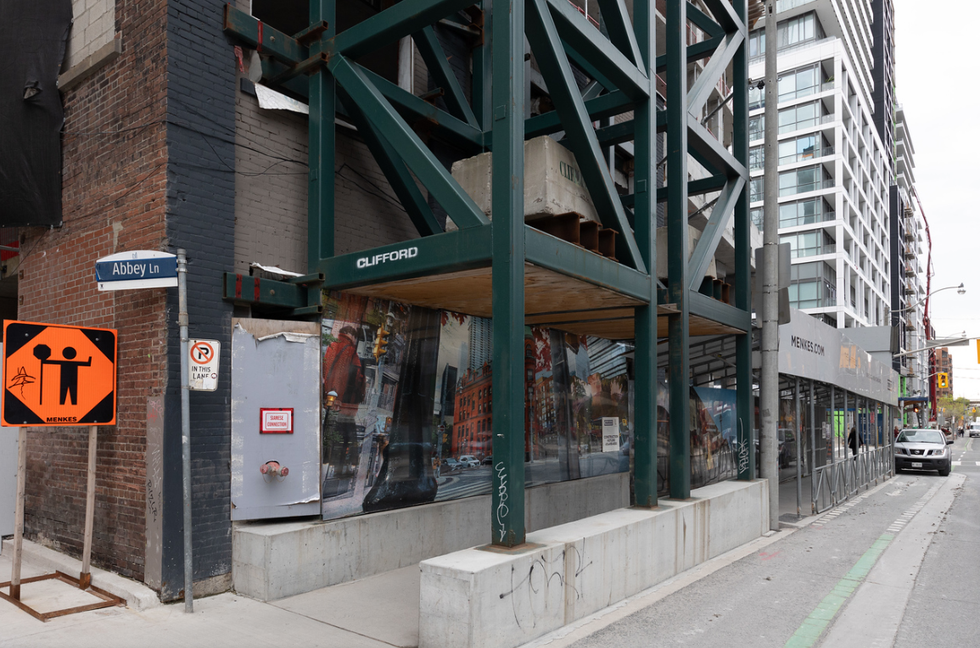
Looking Ahead
For the youth involved, the project has offered the chance to foster a deeper sense of pride in and connection to their neighbourhood.
"I think it's super important for youth to have a sense of home in a space," said Nugent. "Being able to walk down the street and [see their work displayed] is super important."
The Whitfield’s hoarding project serves as an aesthetic improvement, of course, but it also represents something much larger. It makes a statement about the role that art can — and perhaps should — play, when it comes to urban development and community building.
“Passersby will catch the familiar and iconic imagery first,” Menkes says. “But the longer you look at the art display, the more you’ll notice and appreciate the layers of meaning woven in. You’ll really see the visual representation of the community’s essence”
Those subsequent layers match up with STEPS’ perspective on the importance of art in urban spaces. "We believe art has the power to make social, cultural, and economic impacts that are crucial for urban and rural development, as well as community building," says Solanki, “creating more welcoming and vibrant spaces, and engaging the community by activating spaces as art-filled places for gathering.”
Now, this initiative — visible at a bustling intersection — invites passersby to appreciate local artistry while considering how community connection can be deepened via development. (Because when it comes to housing, community is kind of the whole idea… isn’t it?)
For builders who may be inspired by the creative approach to The Whitfield’s hoarding, Menkes notes that the benefits are manyfold. Once again: subsequent layers.
“There’s certainly a practical aspect of hoarding beautifying an otherwise busy construction site,” Menkes says. “But going through this process creates a hoarding experience that’s unique to the project and community, and it’s often the love for the local community that gets exemplified through the public art.”
Now under construction, The Whitfield is scheduled for completion in later 2025. To learn more about the development, click here.
______________________________________________________________________________________________________________________________
This article was produced in partnership with STOREYS Custom Studio.
